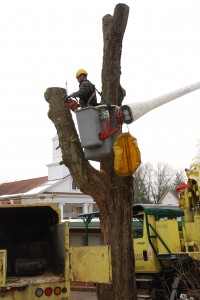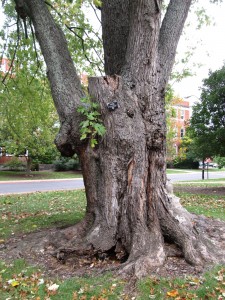Is a hazardous tree lurking in your yard, ready to fall on your house or car? Take a few minutes to inspect trees on your property. Peek over the fence at your neighbor’s trees as well.
Some property owners have an unnatural fear of trees. Well-shaped landscape trees with no dead wood, good growth rate, and a full canopy (top) are rarely a risk. Yes, it’s true that the healthiest of trees are likely to be injured in a “category” hurricane or tornado.
Tree care goes along with tree ownership. Tree health, like people health, changes as they age. Middle-aged trees are less hazardous than mature trees. Age plus a category storm may inflict enough damage to render a tree hazardous.
Location is another factor. A tree deemed hazardous, but not growing near people, houses, and autos, is unlikely to inflict serious injury when it falls. Your insurance company may never hear from you. Trees in a public park, along streets, or in residential zones should be inspected, then pruned or removed.
Trees may show decay or cavities along the main trunk(s) and branches, and timely pruning usually cures most ills. It’s like going to a dentist. A cavity represents wood decay and branch weakness. Decay can be slowed by cleaning out the wound and spraying a pesticide to prevent wood boring insects from habitating.
Different tree species possess different mechanical strengths and decay mechanisms. Weak wooded species considered potentially hazardous include silver maple (Acer saccharinum), cottonwood and hybrid poplars (Populus spp.), willows (Salix spp.), boxelder (Acer negundo), ornamental pears (Pyrus calleryana), and tree-of-heaven (Ailanthus altissima).
A certified arborist can measure the extent of the tree decay using a Resistograph®. A hollow tree cavity is not always hazardous. Tree cavities that are surrounded by at least one inch of solid wood per six inches of tree diameter are unlikely to fail.
Hire only a certified, licensed and insured arborist. Certification is awarded through the International Society of Arboriculture (ISA) following extensive study and testing.



 Posted in
Posted in 
